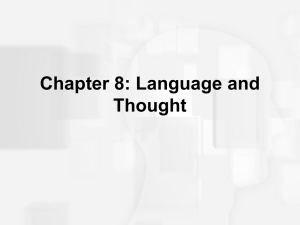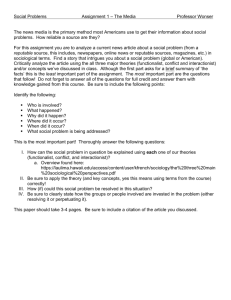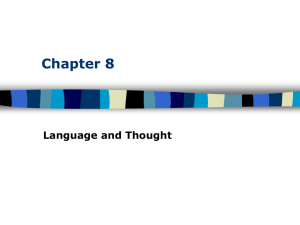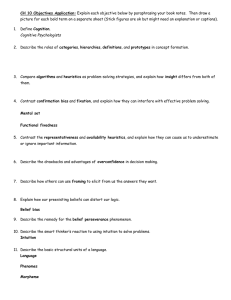Approaches and
advertisement
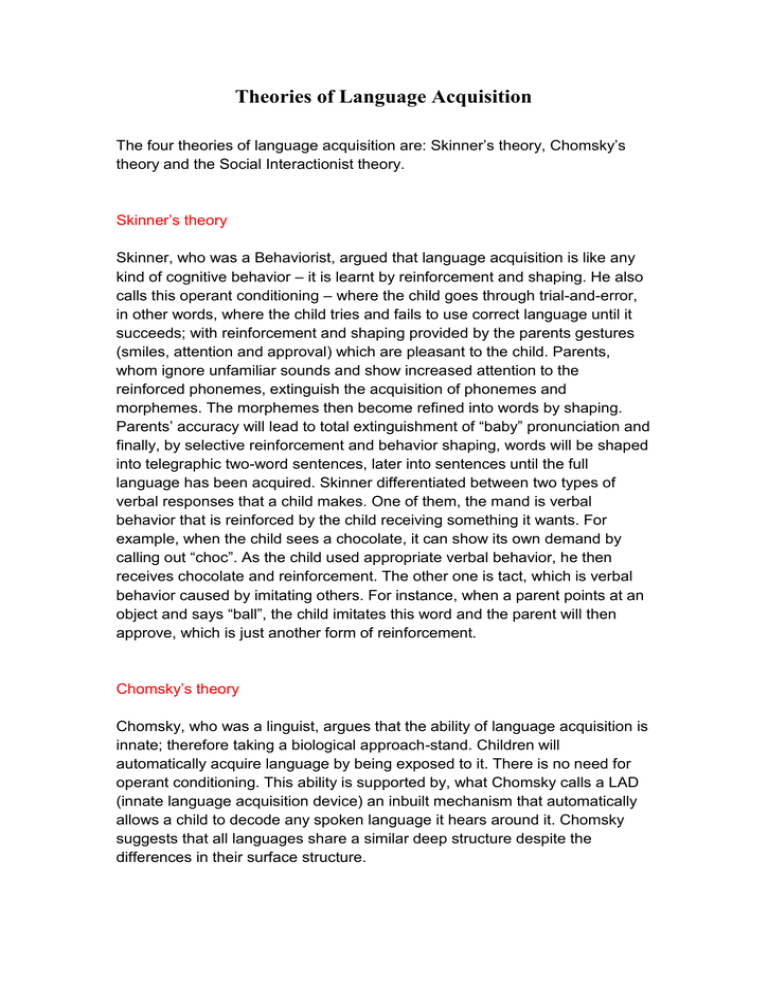
Theories of Language Acquisition The four theories of language acquisition are: Skinner’s theory, Chomsky’s theory and the Social Interactionist theory. Skinner’s theory Skinner, who was a Behaviorist, argued that language acquisition is like any kind of cognitive behavior – it is learnt by reinforcement and shaping. He also calls this operant conditioning – where the child goes through trial-and-error, in other words, where the child tries and fails to use correct language until it succeeds; with reinforcement and shaping provided by the parents gestures (smiles, attention and approval) which are pleasant to the child. Parents, whom ignore unfamiliar sounds and show increased attention to the reinforced phonemes, extinguish the acquisition of phonemes and morphemes. The morphemes then become refined into words by shaping. Parents’ accuracy will lead to total extinguishment of “baby” pronunciation and finally, by selective reinforcement and behavior shaping, words will be shaped into telegraphic two-word sentences, later into sentences until the full language has been acquired. Skinner differentiated between two types of verbal responses that a child makes. One of them, the mand is verbal behavior that is reinforced by the child receiving something it wants. For example, when the child sees a chocolate, it can show its own demand by calling out “choc”. As the child used appropriate verbal behavior, he then receives chocolate and reinforcement. The other one is tact, which is verbal behavior caused by imitating others. For instance, when a parent points at an object and says “ball”, the child imitates this word and the parent will then approve, which is just another form of reinforcement. Chomsky’s theory Chomsky, who was a linguist, argues that the ability of language acquisition is innate; therefore taking a biological approach-stand. Children will automatically acquire language by being exposed to it. There is no need for operant conditioning. This ability is supported by, what Chomsky calls a LAD (innate language acquisition device) an inbuilt mechanism that automatically allows a child to decode any spoken language it hears around it. Chomsky suggests that all languages share a similar deep structure despite the differences in their surface structure. For instance, “I did the homework” and “The homework was done by me” have the same deep structure but differ in the surface structure. The LAD supplies humans with the transformational grammar, which simply means the process of translating underlying meaning into speech. Children use these rules but will sometimes make errors, such as goed and comed (went and came). These are errors in performance not in competence, Chomsky claims. Social Interactionist Theory Supporting that the development of language comes from the early interactions between infants and caregivers, the Social Interactionist theory holds a more social factor-stand, including the ideas of the two previous theories. Snow suggested proto-conversations, which she called the conversations exchange between the caregiver and the infant. Trevarthen used pre-speech. However, probably one of the most known theorists here might be Bruner. He gave more significance to pragmatics, rather than the development of grammar. He suggested LASS – where turn taking of a conversation between a caregiver and an infant is necessary for development. The Social Interactionist theory does not neglect the previous theories, but gives an additional social perspective of language acquisition. Comparing & Contrasting Skinner and Chomsky’s theories contradict each other by Skinner suggesting that the behavior of language is learnt like any other cognitive behavior – and Chomsky holding a stand of language being innate – born with the ability. The Social Interactionist theory gives an additional perspective, more of in social terms and does not exclude either Skinner’s or Chomsky’s theories. However, the Social Interactionist theory is concerned more by the pragmatics of the language, unlike Chomsky whom gives a greater deal of significance to the development of grammar. Even though the Skinner and Chomsky theories can be related to the Social Interactionist theories, the divisions of all of these three are different – the Social Interactionist theory is social constructivist – where the acquisition of language has its roots in the earliest infant-caregiver conversations. Yet, all of these theories are involved with some form of mechanism – either child directed speech, language acquisition device or language acquisition support system. Both Chomsky and Skinner’s theories were made during the mid1950s (1954), whereas the Social Interactionist theory came approximately twenty years later than so, basing its additional theory on the possible two theories.
